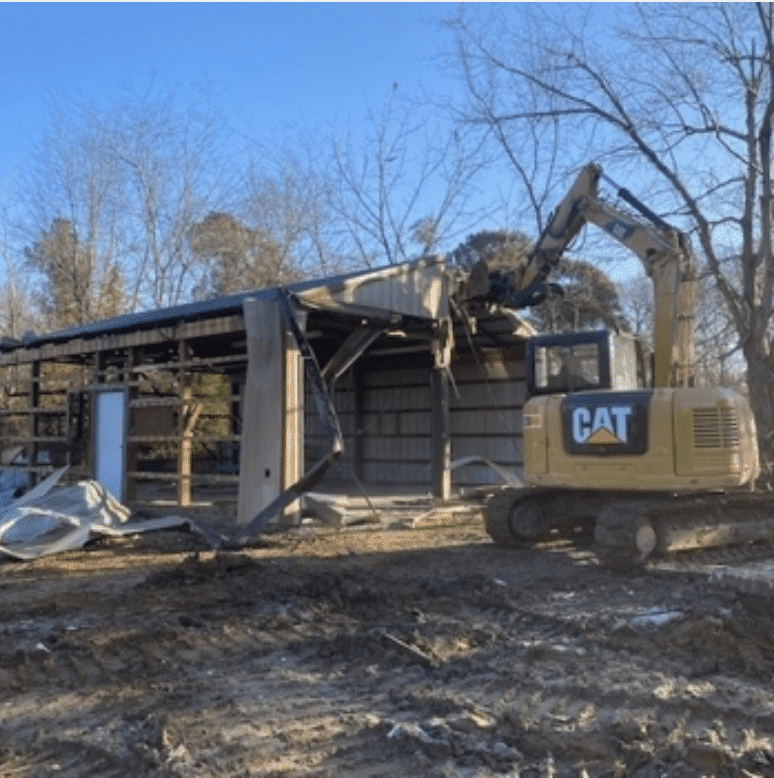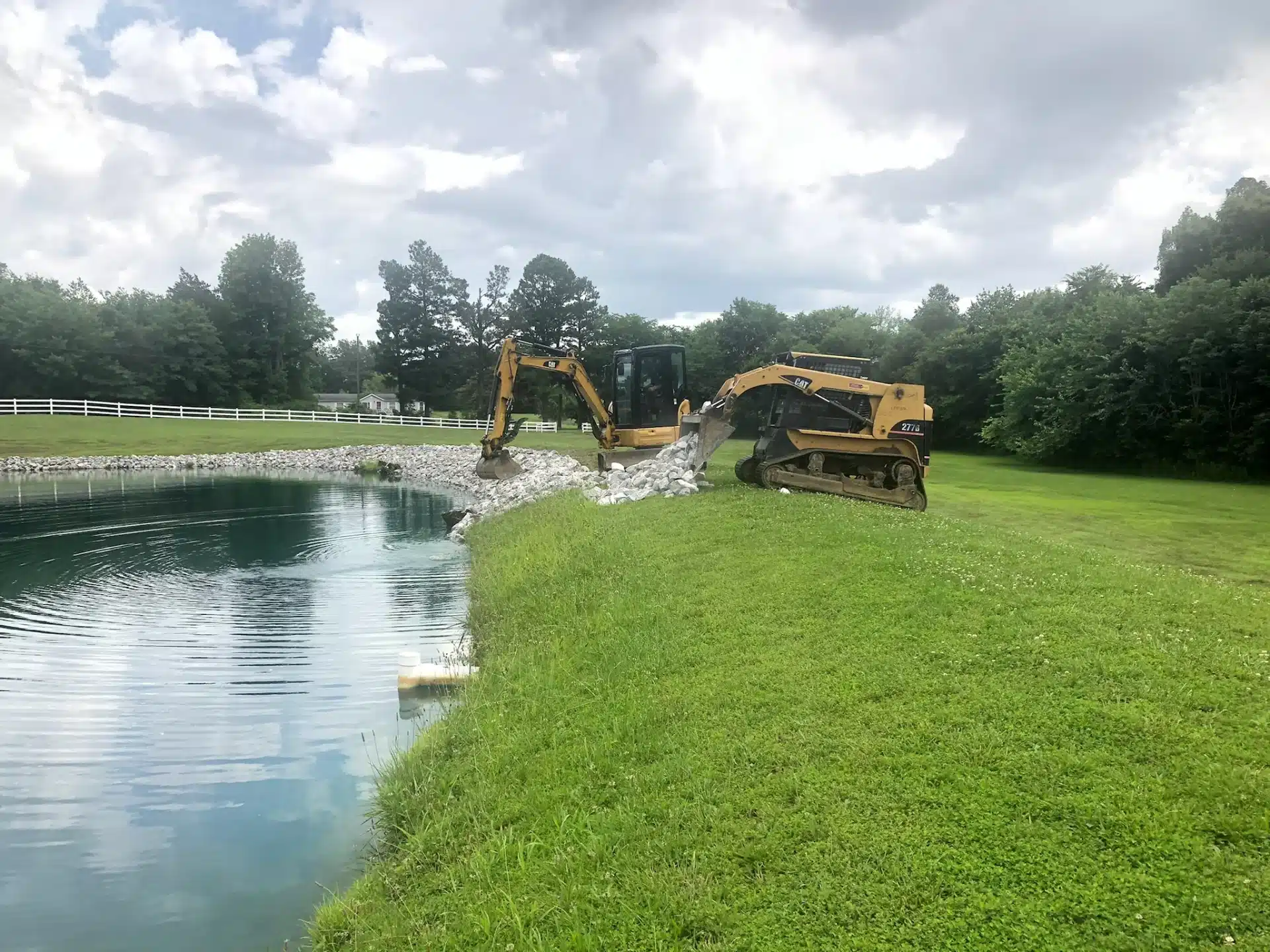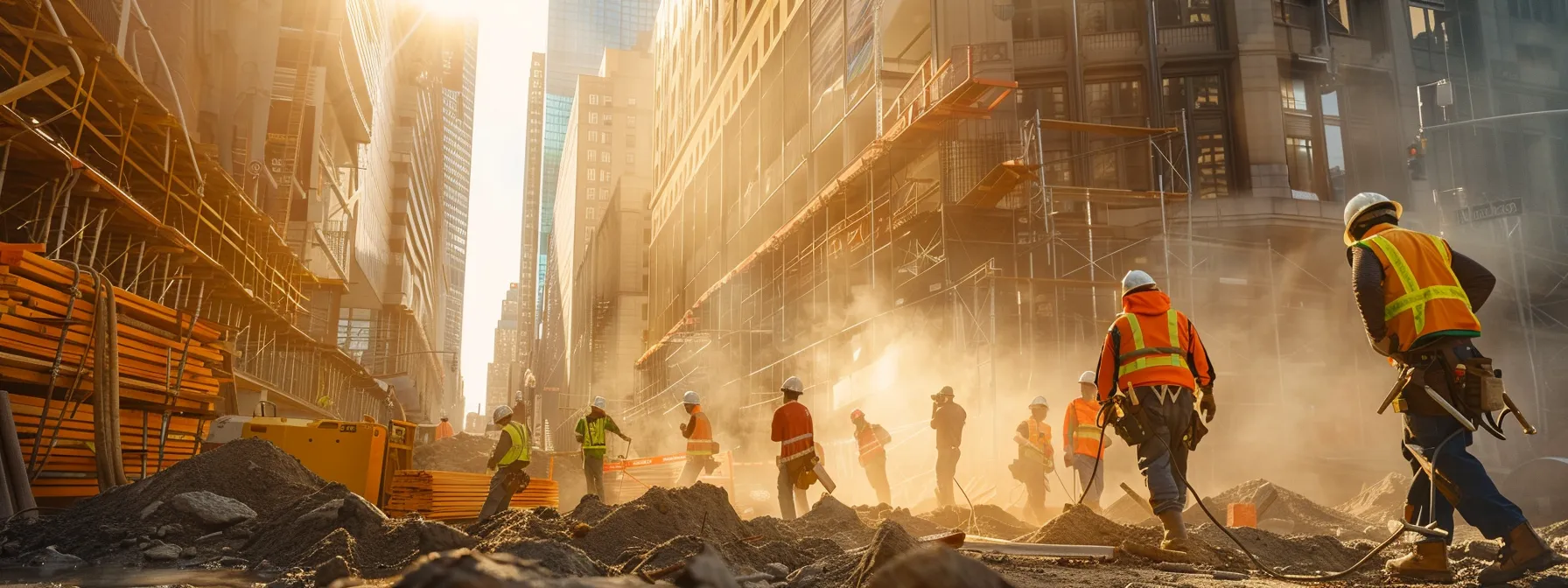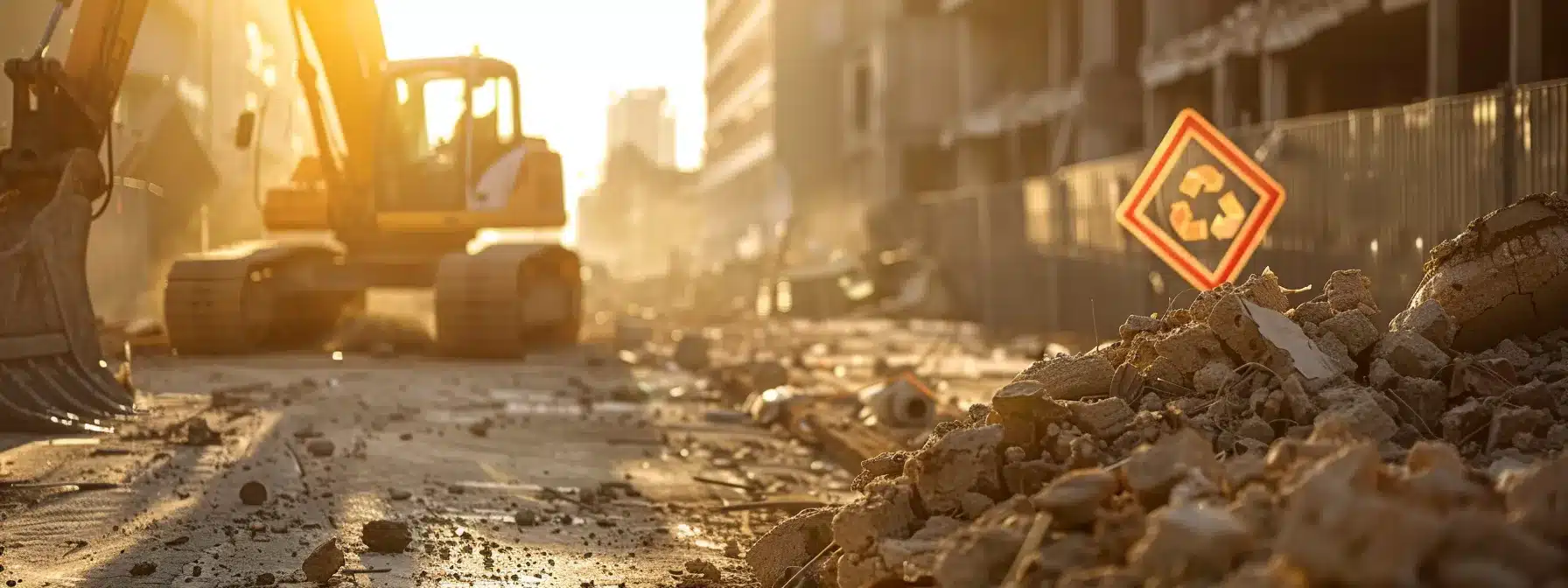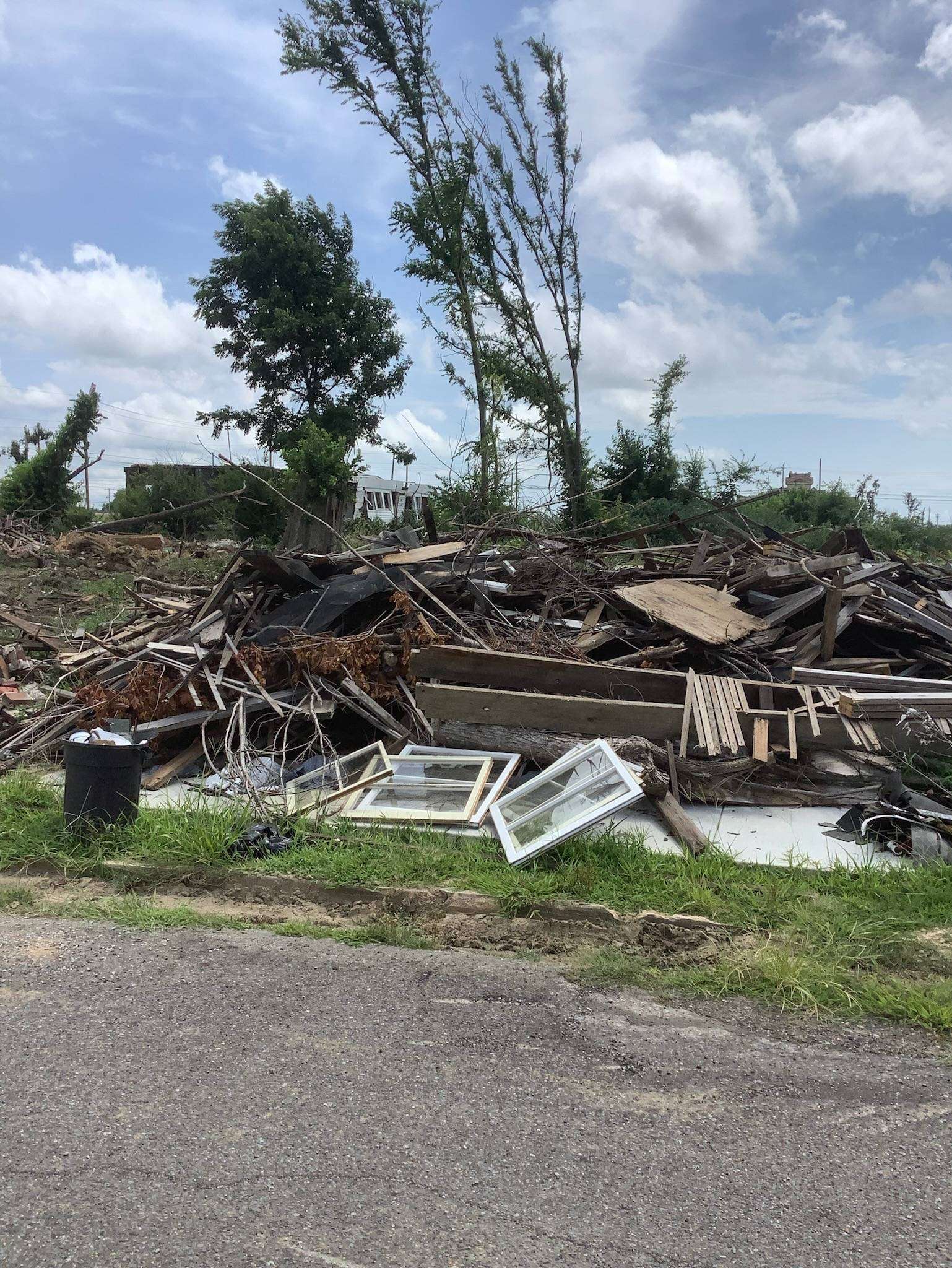Erosion control materials play a crucial role in protecting our landscapes from the damaging effects of erosion. From natural to synthetic options, these materials are designed to prevent soil erosion, promote plant growth, and reduce water pollution.
In this article, we will explore the different types of erosion control materials, how they work, and the benefits of using them. We will also discuss important factors to consider when choosing these materials, how to install and maintain them, and common mistakes to avoid. Let’s dive in and learn more about the importance of erosion control materials.
Important Points to Note:
- Erosion control materials prevent soil erosion, promote plant growth, and reduce water pollution.
- There are natural and synthetic erosion control materials available. Consider factors such as soil type, slope, climate, and budget when choosing the right material.
- Proper installation and maintenance of erosion control materials are crucial for their effectiveness. Avoid common mistakes to ensure their success.
What Are Erosion Control Materials?
Erosion control materials are essential products used to prevent soil erosion and promote vegetation growth on slopes and landscapes.
These materials play a crucial role in safeguarding the environment by maintaining soil stability and preventing the loss of fertile topsoil due to water runoff or wind.
By holding the soil in place, erosion control products protect against soil erosion, ensuring the sustainability of the land for agricultural, landscaping, and construction purposes.
- Erosion control blankets
- Turf Reinforcement Mats (TRMs)
- Erosion control mats
- Coir products
- Geotextiles
Each of these materials offers unique benefits such as bio-degradability, natural erosion prevention properties, and structural support for vegetation establishment.
Types of Erosion Control Materials
Erosion control materials can be categorized into natural and synthetic types, each offering unique solutions for erosion prevention and soil stabilization.
In the realm of erosion control, natural materials like coir offer an eco-friendly solution due to their biodegradable properties. Coir mats, made from coconut husks, are one such example, providing effective erosion control while being environmentally sustainable.
On the other hand, synthetic materials, such as geotextiles, are composed of durable woven or nonwoven fabrics designed to withstand harsh environmental conditions. These materials are lauded for their longevity and ability to prevent soil erosion effectively.
Natural Erosion Control Materials
Natural erosion control materials encompass eco-friendly solutions like coir mats and blankets, which offer sustainable erosion prevention and support for vegetation growth.
These products are made from natural coconut fibers, making them biodegradable and environmentally friendly choices for erosion control. Coir mats and blankets are designed to help stabilize soil on slopes, riverbanks, and construction sites, reducing the risk of erosion caused by water runoff and winds. They provide a protective layer that allows seeds to germinate and plants to establish roots, promoting long-term vegetation growth and biodiversity.
Synthetic Erosion Control Materials
Synthetic erosion control materials include advanced solutions such as TRMs, geotextiles, and erosion blankets, designed for durable and effective erosion control on slopes and landscapes.
These materials play a crucial role in safeguarding the integrity of slopes and soil structures, aiding in vegetation establishment, and preventing sediment runoff. TRMs, specifically, are engineered to provide long-term stabilization through their ability to promote vegetation growth while withstanding harsh environmental conditions. Geotextiles act as a protective barrier, offering filtration and drainage capabilities to enhance soil performance. Woven and nonwoven fabrics possess excellent tensile strength, preventing surface erosion and promoting soil retention.
How Do Erosion Control Materials Work?
Erosion control materials function by creating a protective layer over the soil, preventing erosion, controlling sedimentation, and offering a sustainable solution for landscape stability.
These materials act as a barrier, physically shielding the soil from the impact of water flow, wind, and other erosive forces. By forming a protective barrier, erosion control materials help to maintain soil structure, reducing the risk of land degradation.
Geotextiles, commonly used in erosion control, are synthetic fabrics that provide reinforcement and enhance filtration, allowing water to pass through while retaining soil particles. Fibers such as straw and coconut coir are also popular choices due to their ability to absorb water, maintain moisture levels in the soil, and promote vegetation growth.
Benefits of Using Erosion Control Materials
Utilizing erosion control materials offers numerous benefits, including soil erosion prevention, enhanced vegetation growth, reduced water pollution, and long-term landscaping solutions.
These materials play a crucial role in stabilizing soil and preventing erosion, which helps maintain the integrity of the landscape over time. By supporting vegetation growth, they create natural buffers that further aid in erosion prevention by reducing surface runoff. Plus these benefits, erosion control materials also help mitigate water pollution by filtering sediment and pollutants before they reach water bodies, thus protecting aquatic ecosystems.
These materials provide sustainable landscaping options that not only beautify outdoor spaces but also contribute to the overall environmental health of an area. It’s essential to note that regular maintenance of erosion control materials is crucial to ensuring their continued effectiveness and maximizing their long-term environmental benefits. Proper upkeep, such as monitoring for damage, adjusting placement as needed, and replacing worn-out materials, is key to sustaining the positive impact of erosion control measures.
Prevents Soil Erosion
One of the primary benefits of erosion control materials is their ability to prevent soil erosion by stabilizing the ground and protecting it from erosive forces.
These materials act as a barrier that shields the soil from the impact of wind, water, and other external agents that contribute to erosion. By creating a stable surface layer, they significantly reduce the chances of soil particles being swept away during heavy rainfall or strong winds.
Erosion control blankets, a common type of erosion control material, provide a protective covering over the soil, allowing vegetation to take root and further anchor the soil, thus enhancing its stability and resilience against erosion processes.
Promotes Plant Growth
Erosion control materials promote plant growth by creating a conducive environment for vegetation to thrive, aiding in ecological restoration and erosion control.
Plants require stability and protection to establish strong roots, especially in vulnerable terrains like slopes and landscapes.
Erosion blankets and mats play a crucial role in providing this essential support. By covering the soil surface, these materials shield newly planted seeds and seedlings from the impact of rainfall and wind-induced soil erosion. They help retain moisture in the soil, creating a microclimate that fosters optimal conditions for plant growth.
Reduces Water Pollution
Erosion control materials play a crucial role in reducing water pollution by preventing sediment runoff, controlling erosion, and maintaining environmental integrity.
These materials are specially designed to combat the detrimental effects of erosion, which can lead to the contamination of water bodies. By stabilizing soil surfaces and preventing excessive soil loss due to erosion, they help in preserving the natural habitat for aquatic life and ensuring the overall health of ecosystems. Effective erosion control measures not only safeguard the quality of water but also contribute to the sustainability of surrounding environments by reducing the negative impacts of sedimentation.
Cost-effective
Erosion control materials offer a cost-effective solution for erosion issues, providing sustainable and long-lasting results that require minimal maintenance.
Incorporating erosion control materials into land management practices can significantly reduce the environmental and economic impact of erosion. By using these sustainable solutions, costs are lowered over time due to the durability and effectiveness of the materials, leading to considerable savings in the long run. The low maintenance requirements of these materials mean that once installed, they continue to protect the soil and prevent erosion without the need for frequent upkeep or replacement.
Factors to Consider When Choosing Erosion Control Materials
Selecting the right erosion control materials involves evaluating factors such as soil type, slope conditions, climate considerations, and budget constraints to ensure effective erosion prevention.
Soil composition plays a crucial role in determining the most appropriate erosion control materials to use. Different soil types have varying levels of susceptibility to erosion, affecting the choice of materials required. For instance, sandy soils are more prone to erosion and may benefit from materials like geotextiles or erosion control blankets to stabilize the area. On the other hand, clay soils may require different solutions to prevent erosion effectively.
Type of Soil
The type of soil plays a significant role in determining the most appropriate erosion control products, with different soils requiring specific stabilization methods for effective erosion prevention.
For instance, sandy soils are prone to rapid water infiltration and erosion due to their loose texture and low cohesion. To counter these challenges, erosion control measures such as straw mulching and coir geotextiles are commonly used to stabilize the soil surface and reduce water runoff.
On the other hand, clay soils have high cohesion but are susceptible to surface crusting and water logging, making them prone to erosion. In such cases, techniques like physically binding agents and geocells can be employed to enhance soil stability and prevent erosion by improving drainage.
Slope of the Land
The slope of the land dictates the erosion control measures needed, with steep slopes requiring specialized stabilization techniques and erosion blankets to mitigate the erosion process effectively.
When dealing with steep slopes, the challenges of erosion control become more pronounced due to the rapid water flow and increased susceptibility to soil displacement. To address these challenges, utilizing erosion blankets is crucial in preventing the loss of topsoil and promoting vegetation growth. Stabilization methods such as terracing, retaining walls, and geotextiles can offer structural support and prevent erosion on steep slopes.
Choosing the right erosion control products is essential, as different slope characteristics necessitate specific solutions to ensure long-term effectiveness.
Climate and Weather Conditions
Climate and weather conditions impact erosion processes, making it essential to consider regional climate factors and weather patterns when selecting erosion control materials like geotextiles for effective erosion prevention.
One of the key aspects in erosion control is understanding how climate and weather variables directly influence erosion patterns and sedimentation rates. Different climates pose unique challenges, with factors such as rainfall intensity, temperature fluctuations, and wind strength playing critical roles in shaping erosion processes.
Geotextiles emerge as versatile solutions that can effectively combat erosion across various weather conditions. These engineered fabrics provide stability and reinforcement while allowing water to permeate, thus reducing surface erosion. When choosing geotextiles, it is vital to take into account the specific climate zonal requirements to ensure long-lasting erosion control effectiveness.
Budget
Budget considerations are crucial when selecting erosion control materials, requiring a balance between cost-effective solutions and the effectiveness of erosion control accessories like geosynthetics to meet erosion prevention goals.
Proper budget planning plays a significant role in deciding which erosion control materials to use, as it directly impacts the overall success of erosion control measures. By carefully considering cost constraints and the desired level of erosion control effectiveness, one can ensure that the chosen materials not only fit within the budget but also effectively mitigate erosion risks.
Regarding selecting erosion control accessories such as geosynthetics, it’s essential to evaluate the budgetary limitations alongside the specific erosion control requirements. Geosynthetics offer a range of options, from geotextiles to geomembranes, each differing in cost and functionality. By aligning the budget with the erosion control needs, one can make informed decisions that strike the right balance between cost and performance.
How to Install Erosion Control Materials?
Installing erosion control materials involves proper placement and secure fixing of erosion matting, geosynthetics, and stabilization products to ensure effective erosion prevention and long-term soil stability.
When installing erosion control materials, it is crucial to start by preparing the site properly. Clear any debris, rocks, or vegetation from the area where the erosion products will be placed. Next, ensure that the ground is compacted and graded appropriately to create a stable base for the materials. Proper preparation of the site is essential to the success of the erosion control project.
Maintenance of Erosion Control Materials
Regular maintenance of erosion control materials is essential to ensure continued erosion prevention, landscaping integrity, and effective sediment control measures on slopes and landscapes.
Ensuring that erosion control products are consistently monitored and maintained is crucial in safeguarding against erosion issues. Regular inspections are necessary to identify any damage or wear and tear that may compromise the effectiveness of erosion control measures. Making timely repairs to any damaged materials, such as geotextiles or silt fences, is key to maintaining their functionality and preventing further erosion.
Plus repairs, vegetation management plays a vital role in erosion prevention. Regularly planting and maintaining vegetation helps stabilize the soil, absorb excess water, and prevent sediment run-off.
Common Mistakes to Avoid When Using Erosion Control Materials
Avoiding common mistakes in erosion control practices is crucial to prevent erosion process failures and ensure the proper utilization of erosion control materials and accessories.
Improper installation of erosion control measures can lead to ineffective erosion prevention, defeating the purpose of the whole process. It is essential to ensure that erosion control materials are installed correctly, following manufacturer guidelines and industry standards.
Material selection also plays a vital role in the success of erosion control efforts. Using the wrong type or inadequate amount of material can result in erosion continuing unabated.
Frequently Asked Questions
What are erosion control materials?
Erosion control materials are products or substances used to prevent or reduce erosion of soil and land due to natural causes, such as water, wind, and gravity.
What types of erosion control materials are available?
There are various types of erosion control materials, including geotextiles, erosion control blankets, mulch, and vegetation.
How do geotextiles help with erosion control?
Geotextiles are permeable fabrics that are placed on the surface of soil to prevent erosion. They can help stabilize the soil and improve its drainage, reducing the likelihood of erosion.
What are erosion control blankets?
Erosion control blankets are temporary or permanent materials made of natural or synthetic fibers that are used to protect bare soil from erosion. They can also help with seed germination and vegetation growth.
Why is mulch considered an erosion control material?
Mulch is often used as a protective cover for soil to prevent erosion. It can help reduce the impact of raindrops on bare soil, slow water runoff, and allow for better absorption of water into the soil.
Can vegetation be used as an erosion control material?
Yes, vegetation is an effective natural erosion control material. Plant roots help hold soil in place, and the leaves and stems can help slow water flow and reduce the impact of wind on the soil surface.


